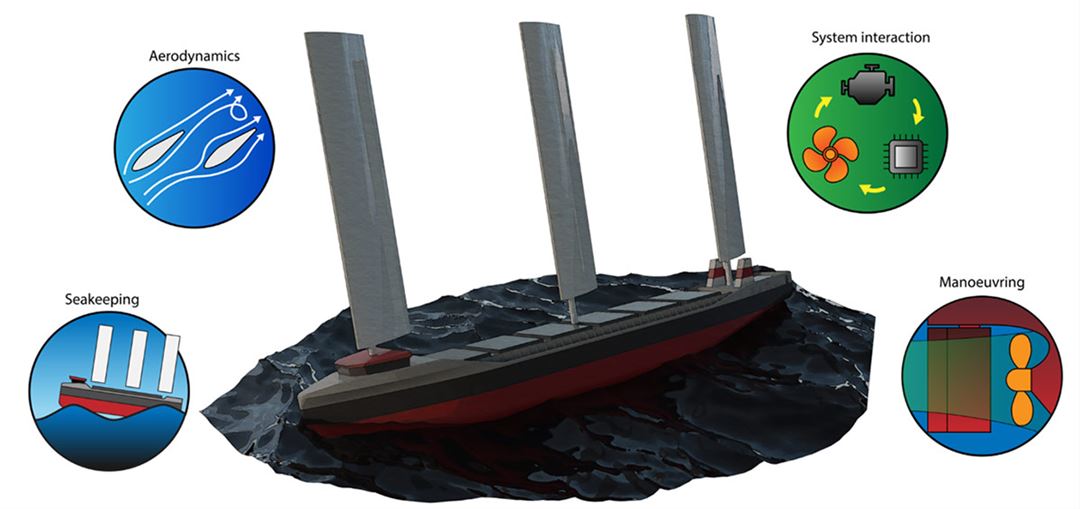Accelerate the uptake of wind-assisted propulsion
Greenhouse gas emissions from shipping represent around 3% of global emissions. Due to new regulations, this must be reduced drastically in the coming years before reaching zero by 2050.
Switching from fossil fuels to other energy carriers is challenging. Batteries require high investment costs and huge space on board to be feasible for long-distance shipping. Zero-emission fuels - such as hydrogen, ammonia, and methanol - have a long way to go before they can be produced sustainably at a large enough scale.
The maritime sector is, therefore, searching for other complementary solutions.
Enormous potential
Wind-propulsion technology (also known as wind-assisted technology) is among the solutions that have gained increasing attention recently. It has enormous potential to decarbonize shipping and can both reduce emissions in the short term and enable long-term strategies relying on zero-emission fuels. However, looking at the international shipping fleet (and new-build order book), by the end of 2023, around 50 large ships out of over 110,000 vessels, will have wind-assisted technology. But why so few? One reason is the large amount of uncertainty in the current cost-benefit analysis of wind-propulsion technology. Improving this is the focal research point of the KSP project "WIND - Enabling Zero-Emission shipping with wind-assisted propulsion."
Research need
Most existing analysis of wind-powered ships are based on large simplifications. Unsteady physical effects and operational situations, such as manoeuvring, seakeeping and unsteady weather conditions, are almost completely neglected, and the interaction between different ship system components are not always accounted for in an accurate manner.
KSP WIND will develop new simulation tools for accurate analysis of wind-powered ships that include aerodynamics, hydrodynamics, propulsion, machinery, control system, and operation, both for short-term time-domain analysis and long-term statistical analysis. The tools will then be used for accurate case studies of wind-powered ships to quantify the potential of wind-power and make suggestions for design changes to maximize fuel savings.
This will help Norwegian ship owners, ship designers, and equipment suppliers positions within emission-friendly maritime technology and enable sustainable growth while reducing the environmental impact.
Project Objective
The main objective of this project is to study merchant ships where a large portion of the propulsion power comes from the wind, with particular focus on unsteady effects and challenges related manoeuvring, seakeeping, and ship system interaction. The goal is to quantify how these effects might affect the performance and fuel savings of wind powered ships and to suggest solutions to any problems detected and hence, to pave the way toward net-zero shipping and decarbonization in maritime transport. The risk – both economical and safety – connected to installing new wind power devices will be reduced by developing new and more accurate simulation tools for the maritime industry.
The secondary objectives include:
1) Development of new simulations frameworks;
2) Introduce advanced experimental protocols to validate the performance predictions of ships equipped with wind-assisted propulsion;
3) Demonstrate business application and potential of wind-propulsion on commercial routes.

Expected impact
The WIND project will enable the maritime sector to move, with confidence, towards ships where a large portion of the propulsion comes from the wind, both as retrofit solution and on newbuilds. This will directly address societal and industrial challenges related to sustainability and climate impact from shipping. It will generate market opportunities, new jobs, and increase competitiveness in Norway.
WIND will provide a unique framework for building knowledge and research capacity in industry, academia, and research institutes. It will promote value creation across the maritime industry, through knowledge transfer and exploitation of the models, tools, guidelines, and analyses from the project.
The WIND project will result in cost reduction and energy efficiency for ship owners and provide ship designers and equipment suppliers with new insights, knowledge and agility to develop high quality designs and products for wind powered ships.
Partners
Project Facts
Project title: WIND - Enabling Zero-Emission shipping with wind-assisted propulsion
Funding: The Research Council of Norway
Project type: Collaborative and knowledge-building project
Thematic area: Ocean
Topic: Maritime sector
Duration: 2023-2027
Budget: 15,2 MNOK (11,5 MNOK funded)
Consortium: 14 partners
Project owner: SINTEF Ocean
















